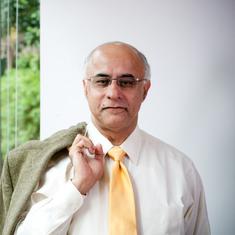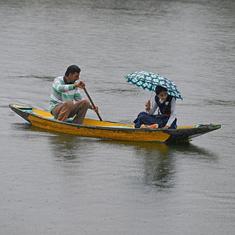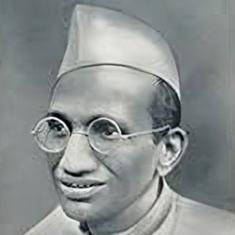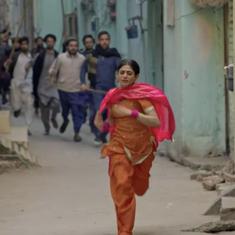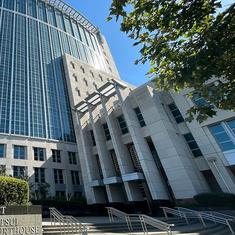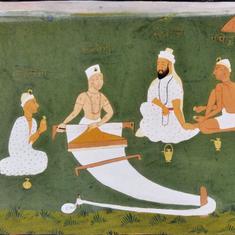“If you can learn to drive in India, you can drive pretty much anywhere in the world.” That statement is commonly used to describe just how skilled a person needs to be to drive in this country – and reflects just how dangerous Indian roads are perceived to be.
With the high number of accidents, drunk-driving and wrong side driving incidents, motorists risk their lives unless they drive with complete focus.
Now, imagine being a pedestrian on such roads.
Here are some statistics that tell the story. According to a World Bank report that documents, road accidents have claimed 1.3 million Indians and injured more than five million in the last decade.
It is also true – and depressing – that though India possesses only 1% of the world’s vehicles, it accounts for 11% of global road accident deaths.
Poor households struggle more
The World Bank report found that the severity of an accident is higher for low-income households than high-income households.
Forty-four percent of the households in rural areas reported at least one death due to a road crash, compared to 11.6% in urban areas. The decline in the total household income as a result of a road accident for lower-income homes was reported to be 75%, compared to 54% for a higher-income household.
It is not that urban areas or higher-income homes have a less serious problem, but that the severity of the impact that road crashes have on poorer households requires more attention.
Intuitively, it is individuals from lower-income households who are more likely to travel on foot or bicycle, use public transport and therefore, be more prone to road accidents.
The average cost of an accident for a lower-income household is Rs 1.5 lakh. This is a huge amount for poorer households, and since it is often the primary breadwinner who suffers an injury or disability, the debt burden is more severe.
MoRTH has decided to enhance compensation to victims of Hit & Run motor accidents - from Rs 12,500 to Rs 50,000 for grievous hurt and from Rs 25,000 to Rs 2,00,000 for death. This will be effective from 1 April 2022 and applicable for all roads and highways across India. pic.twitter.com/ocWGOYab8f
— MORTHINDIA (@MORTHIndia) February 27, 2022
The lack of safety on Indian streets is adding to the burden of those living in precarious financial, social and economic conditions.
Road accidents also have a gendered impact with women bearing the brunt of care-giving activities since the breadwinner or primary earner of a family is usually a man. Women suffer a double labour and mental health burden on top of the inequality in finding earning opportunities, says the World Bank report.
They have to find work or take on extra work to replace the loss in income. Further most earnings have to be dedicated to the care of the family member who suffered the accident.
A citizen-first approach
In India, unless a disability occurs due to a condition at birth or one that naturally comes later in life, the cause is nearly always a road crash. Devika Malik, a former para athlete and co-founder of the Wheeling Happiness Foundation, has been working to make Indian streets more inclusive for disabled people. Design a city for the disabled and everyone will be better off, she says.
The idea is simple. By designing public spaces and streets that cater to the disabled, these spaces are naturally made safer by design, for all. Examples include setting up better pedestrian crossings, improving post-crash care systems or even just setting up ramps in public transport systems.
Malik highlights the importance of a citizen-first approach to reduce the number of deaths and injuries on the streets. She argued that there is an over-reliance on local authorities and the bureaucracy to make change, and the role of individual responsibility becomes easy to ignore.
Consider the example of drunk driving and driving on the wrong side of the road. The law is clear on both – they are illegal. However, 10% of road crash deaths in India are a result of these illegal acts. Pushing for policy change is important, but it is equally important to realise one’s individual responsibilities in keeping roads safe.
We often talk about people and children living with disabilities, but do we give them space in policy making? If they are given space, surely they will give necessary suggestions, which we can implement.
— Congress (@INCIndia) March 21, 2022
: Shri @GauravGogoiAsm#CongressInParliament pic.twitter.com/3mB7AHQNYO
If one sees a dangerous intersection or a damaged footpath, report it to the local authorities. If one comes across roads or public transport systems with no infrastructure allowing the disabled to access the, report it. Malik says that everyone has the power of social media in their hands. Call out the problems, and even the people causing them.
Most important, however, is to follow traffic rules. The reason Indian roads are so dangerous is partly because of the incessant need to try and get from point A to point B as quickly as possible. Motorists jump red lights, drive on the wrong side of the road and well over speed limits because of this urgency.
Since everyone is doing it, nobody feels incentivised to stop. Believe it or not, a yellow light is an indication to slow down, not speed up so as to avoid waiting, given the way most motorists behave.
What ails us is the tragedy of the commons. It is the idea that each of us, individually, does not want to act because we feel our individual contribution will not make a difference in the larger scheme of things. One will not walk to a market 500 metres away instead of driving because the perception is that one trip will not make any difference to the air pollution or traffic congestion.
Similarly, most motorists do not feel guilty about skipping a red light because they did not hurt anyone and following traffic rules seriously does not not make an actual or noticeable difference. The tragedy of the commons is one of the reasons there is a global climate crisis. It is also why Indian roads remain so unsafe.
Akash V Basu is an Associate at Raahgiri Foundation. Sarika Panda Bhatt is Director at Nagarro.
